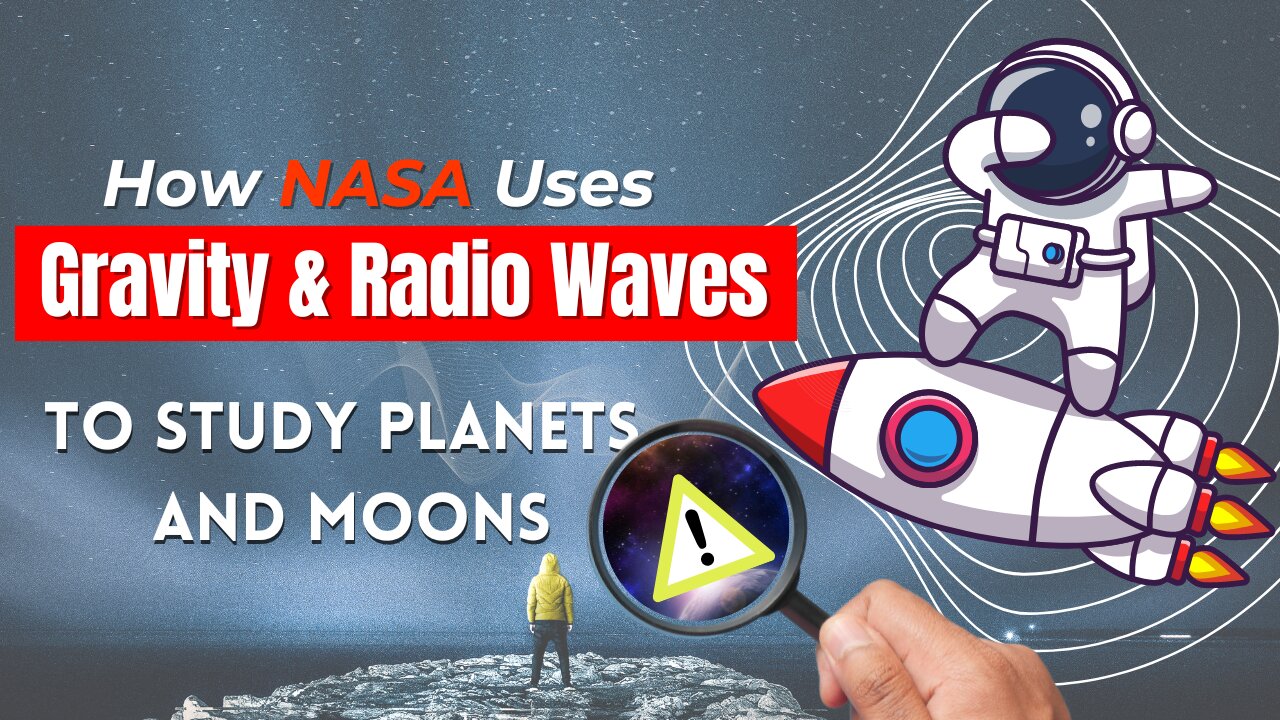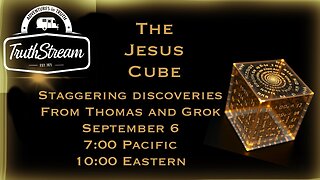Premium Only Content

How NASA Uses Gravity and Radio Waves to Study Planets and Moons
The Deep Space Network, NASA’s international collection of giant radio antennas used to communicate with spacecraft on the Moon and beyond, helps scientists and engineers use gravity and radio science experiments to learn more about our planetary neighborhood.
After reaching a spacecraft reaches its destination, it uses radio antennas to communicate with the Deep Space Network, which in turn transmits radio signals back to the spacecraft. Every spacecraft travels in a predetermined path emitting radio signals as it orbits around its target. Scientists and engineers can infer the spacecraft's location and how fast it's going by measuring changes in the spacecraft's radio signal frequency. This is made possible by the Doppler effect, the same phenomenon that causes a siren to sound different as it travels towards and away from you.
The Doppler phenomenon is observed here when the spacecraft and the Deep Space Network antenna move in relation to each other. Differences between the frequency of radio signals sent by the spacecraft as it orbits and signals received on Earth give us details about the gravitational field of a planetary body. For example, if the gravity is slightly stronger, the spacecraft will accelerate slightly more. If gravity is slightly weaker, the spacecraft will accelerate slightly less. By developing a model of the planetary body's gravitational field, which can be mapped as a gravitational shape, scientists and researchers can deduce information about its internal structure.
The Deep Space Network was developed by and is managed by NASA’s Jet Propulsion Laboratory (JPL) in Southern California. The antennas of the Deep Space Network are the indispensable link to robotic explorers venturing beyond Earth. They provide the crucial connection for commanding our spacecraft and receiving never-before-seen images and scientific information on Earth, propelling our understanding of the universe, our solar system and ultimately, our place within it.
JPL manages the Deep Space Network for the Space Communications and Navigation (SCaN) Program, based at NASA Headquarters within the Space Operations Mission Directorate.
Learn more about the DSN at go.nasa.gov/about-dsn
-
 LIVE
LIVE
DoldrumDan
2 hours agoPARRY ONLY CONSORT RADAHN - TODAY IS THE DAY - FIRST PLAYTHROUGH
14 watching -
 8:10
8:10
MattMorseTV
17 hours ago $22.55 earnedTrump's "SURPRISE" for MADURO.
133K102 -
 24:39
24:39
GritsGG
16 hours agoINSANE Ranked Game on Warzone!
26.7K3 -
 LIVE
LIVE
Lofi Girl
2 years agoSynthwave Radio 🌌 - beats to chill/game to
479 watching -
 5:52:00
5:52:00
Akademiks
12 hours agoWAR IN ATLANTA Episode 5. YOUNG THUG FIRST INTERVIEW about SNITCHING, GUNNA... BREAKS DOWN CRYING!
170K9 -
 7:30:25
7:30:25
SpartakusLIVE
16 hours agoVerdansk Duos w/ Nicky || Saturday Spartoons - Variety Later?!
66.4K1 -
 1:38:47
1:38:47
Badlands Media
1 day agoDevolution Power Hour Ep. 387: Trump, Epstein, Durham Mysteries, and North Korea Ops
110K32 -
 1:05:23
1:05:23
Man in America
20 hours agoSoaring Gold Exposes the Imminent Crash of the Old System w/ John Perez
67K26 -
 2:42:40
2:42:40
TruthStream with Joe and Scott
20 hours agoTHOMAS AND GROK: AI, Bible decodes, The JESUS Cube live 9/6 #487
54.7K12 -
 2:34:46
2:34:46
BlackDiamondGunsandGear
14 hours agoGet Prepped / After Hours Armory / LIVE SHOW /
35.6K3